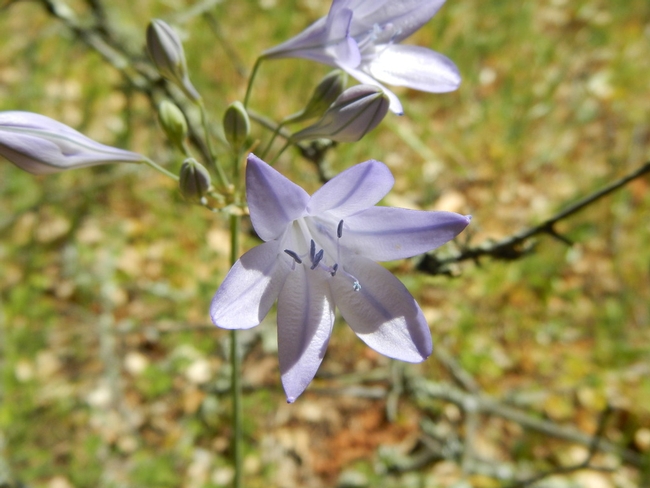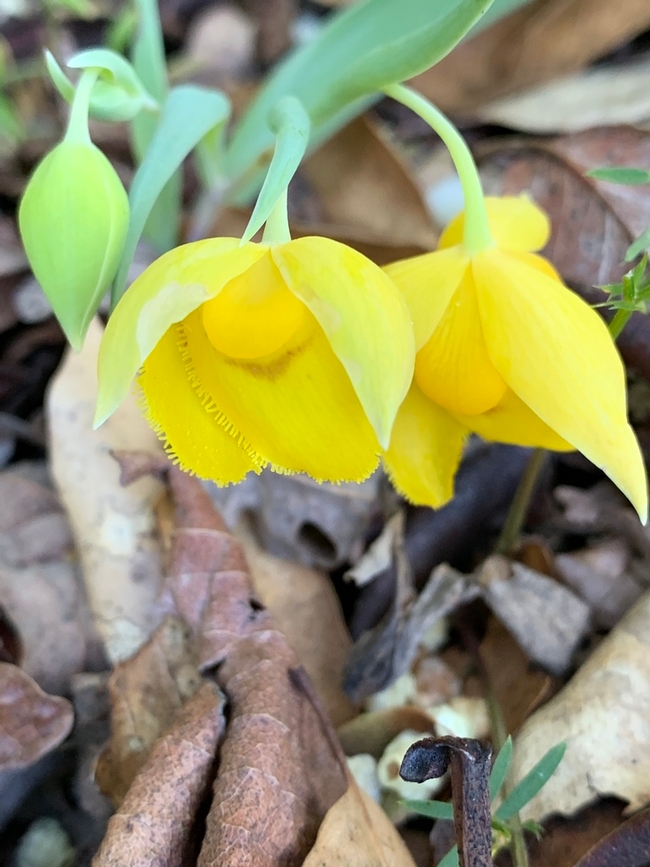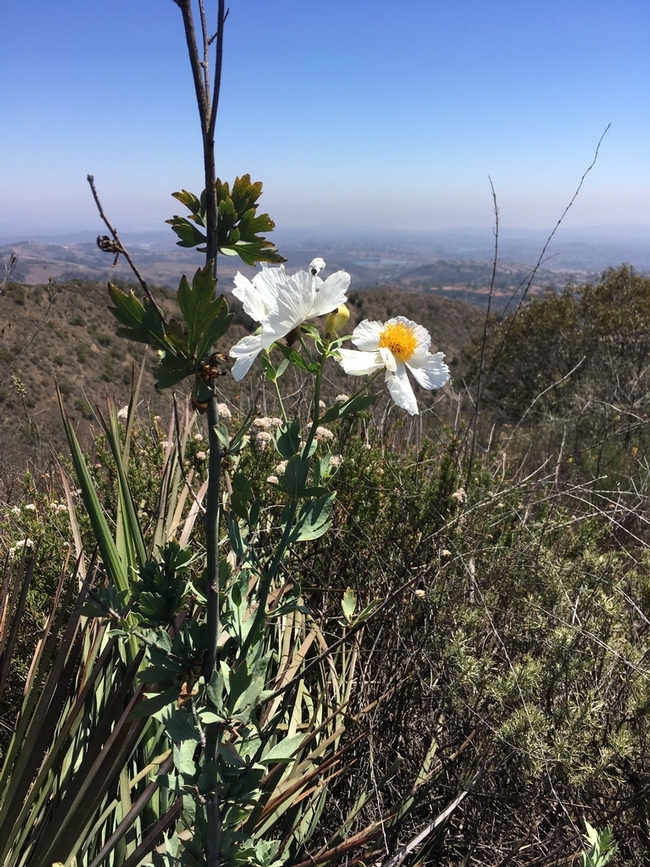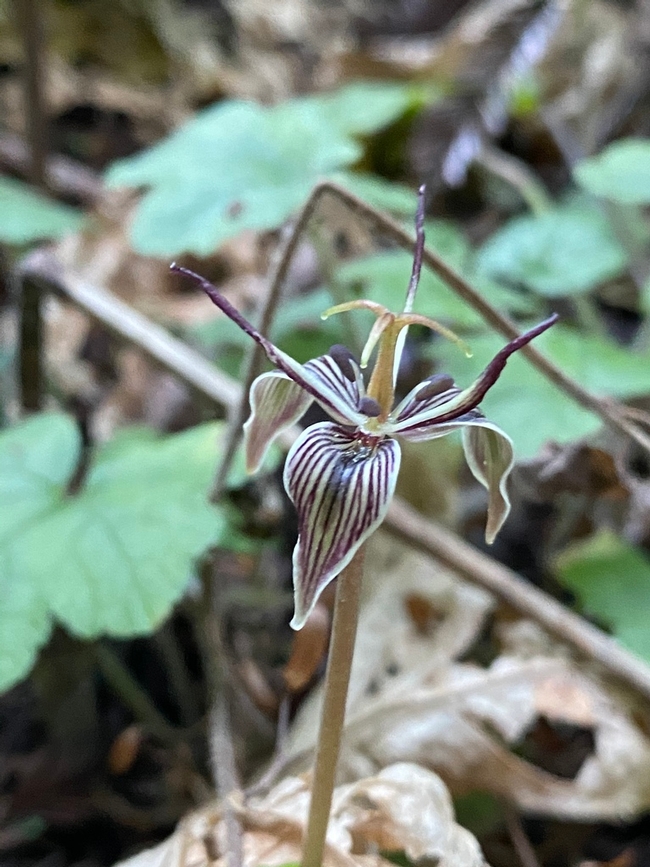The reappearance of favorite springtime wildflowers across California brings a smile to any Naturalist. We recite their names as we come across them in the field, upload them to iNaturalist, and note them in our nature journals with joy. While the Latin names reveal interesting features of the plants themselves, some of these favorite flowers have common names that have us wondering: what's the story behind that?
Ithuriel's spear, Triteleia laxa

These flowers stand tall above the already-browning grass of the California Coast Range and Sierra Foothills. With their many bright, trumpet-like flowers atop a long stem, you can definitely get the spear-like impression from its namesake. The genus Triteleia itself has an interesting etymology: it is derived from the Greek tri, “three” and teleios, “perfect,” with the floral parts being in threes. But who is Ithuriel, and what is so special about their spear? Ithuriel was an angel in Milton's Paradise Lost who found Satan squatting like a toad, close at the ear of Eve, and transformed him by a touch of his spear to his proper form (Read more).
Diogenes' lantern, Calochortus amabilis

We love a good Calochortus. With its fuzzy three petals smaller size compared to many Calochortus species in California, this little yellow flower is delightful to stumble upon in the Northern Coast Range. These flowers are a bright light in the oak woodlands, but what is the connection to Diogenes? Diogenes of Sinope (c. 404-323 BCE) was a Greek Cynic philosopher best known for holding a lantern (or candle) to the faces of the citizens of Athens claiming he was searching for an honest man. Diogenes "was known for brutal honesty in conversation, [and] paid no attention to any kind of etiquette regarding social class." He is well known for his encounter with Alexander the Great, who "found Diogenes resting in the sunlight, introduced himself, and asked if there was anything he could do for him. Diogenes replied, 'Yes. Get out of my sunlight'" (Read more).
Coulter's Matilija Poppy, Romneya coulteri

Author Mary Elizabeth of the 1897 "Wildflowers of California" wrote, “The Matilija Poppy must be conceded the queen of all flowers.” It was a contender for being named the California state flower in 1890, but ultimately the California poppy won the title. Though that poppy doesn't have nearly as interesting of a story as R. coulteri. The Matilija poppy is said to get its name from Chief Matilija of the Chumash peoples of present-day Santa Barbara and Ventura counties and the Channel Islands. In "My Chumash Ancestral Legacy," Chumash descendant Julie Tumamait-Stenslie describes,
We grew up hearing about Chief Matilija and his group of warriors who tried to fight off the ever-present armies. In the myth, the story goes on to tell of Chief Matilija's daughter, Amatil, who was very much in love with the handsome warrior, Cocopah. Tragically, he was killed in the final battle. Amatil's love was so deep and so pure that she she laid upon her lover and there she died. What remained of that love was a beautiful flower with pure white petals symbolizing their love and a yellow center to represent the everlasting brilliance of their love. We know this flower as the Matilija Poppy.
California Fetid Adderstongue, Scoliopus bigelovii

While the season for spotting these in the redwood forest has past (typically about January through April), we couldn't resist this common name. The fetid part of the name is apparent to anyone who has done the flower squat to get down and smell these little flowers (spoiler alert: it's not pleasant), but what about the "adderstongue" part? The term adder is Old English for snake, and it can refer to several different types of snakes (Read more). Though we don't have any of the adder type of snakes here, we do have these adderstongue flowers. The genus Scoliopus is said to be named Adderstongue because the spore-bearing stalk resembles a snake's tongue, though the Latin name "Scoliopus" derives from the Greek words skolios and pous, meaning curved foot which is a reference to the shape of the pedicel. There you have it!